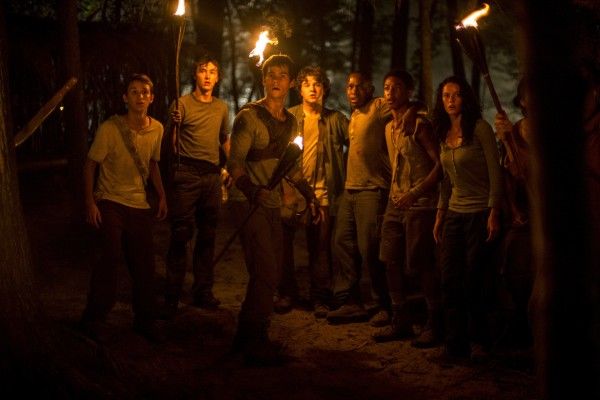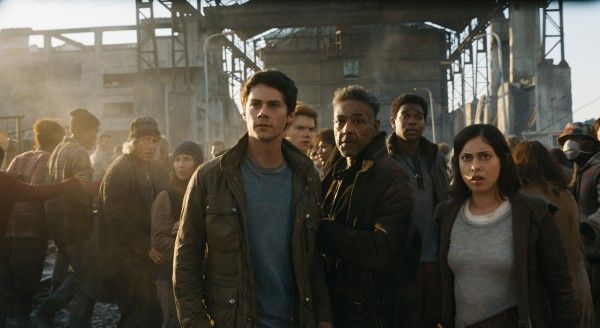This weekend saw the release of Maze Runner: The Death Cure, the final installment in the Maze Runner trilogy. It topped the box office and slightly exceeded estimates with a $23.5 million opening in 3,787 theaters, but it was also the weakest opening of the three films in the series. It follows the most recent pattern of diminishing box office returns from installments in young-adult franchises. The last two The Hunger Games movies, the final Divergent movie and the Percy Jackson: Sea of Monsters sequel are recent examples. Whether it is the quality of the installments which have consistently gone down, the audience maturing out of the intended demographic, or the studios’ inability to cater to what the new generation of young adults wants to see, it’s clear that this is a dying genre.
When the Maze Runner and Divergent franchises arrived in 2014, they were both coming on the heels of the worldwide success of both The Hunger Games and the Twilight film series. Those franchises had earned well over $3 billion each and studio executives had discovered that young-adult franchises could be the wave of the future. These franchises had the potential to rival any superhero or fantasy franchise with a younger audience willing to indulge in their combination of romance and action. However, the Twilight series ended in 2012 after five relatively mediocre films with tabloid drama both on and off the set. The Hunger Games franchise stepped into this impending void in 2012. It exploded the box office over its first two movies and became worldwide sensation by appealing to the growing base of young filmgoers who saw themselves in Jennifer Lawrence’s Katniss Everdeen. They connected with her warrior nature and her desire to fight to save her family and change her society. Yes, there was a love triangle, but unlike Twilight the men weren’t fighting over her as an object. She set the rules and the terms. It mirrored the changes that we were seeing in society as young women were becoming leads in projects and having their voices heard more loudly in the pop culture mainstream. However, after the second installment in 2013, the audience’s interest in the franchise declined. They sensed Lionsgate’s naked attempt at a cash grab when they split the last installment into two parts. Also, the audiences who had championed this series and the Twilight series were getting older and moving on to weightier fare. By the time The Hunger Games: Mockingjay Part 2 wrapped its run at the box office, the franchise was over, and it left a void in the young-adult genre which The Maze Runner and Divergent series gladly jumped in to fill.
The Maze Runner exploded out of the gate with a $32 million on the way to making $348 million dollars worldwide in 2014. The film, from director Wes Ball and starring Teen Wolf’s Dylan O’Brien, received an “A-“ on Cinemascore and a critics score of 65% on Rotten Tomatoes. It was received warmly by a majority critics and avoided the pitfalls that had besieged previous young-adult fare like Beautiful Creatures, Mortal Instruments: City of Bones, The Host, and Vampire Academy. The sequel, Maze Runner: The Scorch Trials, however, arrived less than a year later with a $30.3 million opening and a “B+” Cinemascore which was slightly less than the first film on both counts. It made almost $36 million less than the first film and would only manage a 46% on Rotten Tomatoes. Why did this happen? Well, the negative reviews focused on the sequel’s convoluted plot, ineffective dialogue and accused it of removing the fun and originality of James Dashner’s books. The negative reviews and poor word of mouth clearly affected Maze Runner: The Death Cure. The film was delayed by a year due to Dylan O’Brien’s on set accident, but the young-adult market for the film had waned. It had the largest budget of the three films at $62 million yet came in $7 million behind the debut for Maze Runner: The Scorch Trials and $9 million behind Maze Runner. It does have a 44% on Rotten Tomatoes, which might help the film improve on its $105 million opening weekend. But, given the history of the installments in these franchises, it’s more likely that it will come in far below the first two films which would signal the last of these young-adult franchises to be in production.
The Divergent franchise, based on Veronica Roth’s internationally acclaimed series of books, took a page out of the Hunger Games book by casting an actress with a strong pedigree as its star. Shailene Woodley had already achieved fame as both the lead in ABC Family’s The Secret Life of an American Teenager and for her work in Alexander Payne’s Oscar nominated film, The Descendants. Lionsgate/Summit Entertainment who had launched the Hunger Games and Twilight franchises gave Divergent the blockbuster treatment with an all-out marketing campaign. It paid off with a $54.6 million opening in route to making $288 million worldwide. The next two sequels, Insurgent and Allegiant, opened with a lower amount than the first film with Allegiant having the most precipitous drop with a $29 million opening. Insurgent would go on to take in over $297 million worldwide, besting the first film’s total by a little under $10 million. No such luck for Allegiant as it only made $179 million worldwide. It also received a 12% on Rotten Tomatoes, which did not help. Once again, this franchise suffered from a lack of commitment by the studio to produce a quality sequel. As a result, Lionsgate decided to shoot the final installment for TV. It will spin off the new characters into a Divergent TV show. To no one’s surprise, Shailene Woodley told Vanity Fair during the premiere of her new HBO miniseries, Big Little Lies, that she would not “be on the television show” which likely signals the end of her involvement in the franchise if the TV series ever gets out of development hell.
What you see here in these young-adult franchises is the law of diminishing returns. Every single one of these franchises begins to decline after its first or second installment due to the quality of the films and the maturing of the audience. It’s impossible to deny that there isn’t a consistent pattern of audience disinterest as soon as the first or second installment of a young-adult franchise opens. So many promising ones never even make it to a second movie, like The Golden Compass or Enders Game. The ones that do don’t seem to have the same commitment to quality from the studios in order to keep the franchises going. It’s telling that there are no major young-adult franchises currently in production. What studios seem to have done though is move the young-adult approach into its superhero or fantasy franchises. Fox seems to be doing this with The New Mutants and with their young heroes in the new X-Men movies. Perhaps this is the next evolution of young-adult franchises, morphing them into existing superhero and fantasy franchises they were constructed to be counter programming for. It will have to do until a new series of books comes along grabbing the public’s attention and leading to an outcry for a film adaptation of them. We shall see if the odds will ever be in the favor of a stand along young-adult franchise again.





